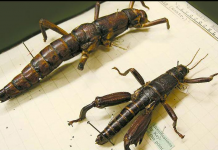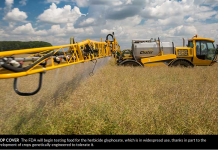I received the 2109 Center for Human Health and Environment Outstanding Member Award on May 15, 2019.
Member of Editorial Board for Austin Medical Sciences Journal
I become a member of Editorial Board for Austin Medical Sciences Journal. Click here to access the journal page
Hard-core sequencing
By Alen Dove
For many molecular biologists, a specimen that is too degraded for easy DNA sequencing is a minor annoyance. They simply prepare another, better sample from the abundant source material they have on hand in cultured cells, laboratory animals, or a freezer full of tissues. But what if the only available specimen is an arsenic-preserved pelt from 150 years ago, a pile of mummified dung found in a cave, or a single formalin-fixed pathology slide? As sequencing technology steadily improves, such irremediably difficult samples have gradually begun yielding usable sequences.
The goals of these hard-core sequencing projects range from studying climate change, to classifying—or even resurrecting—extinct species, to improving cancer diagnosis. Nonetheless, they share many of the same challenges, as stored DNA breaks down into progressively smaller fragments over time. Moreover, standard preservatives or compounds in the environment chemically modify the nucleic acids, thereby making modern sequencing techniques produce vast quantities of often cryptic data. Despite those barriers, scientists and equipment makers are pushing sequencing techniques steadily forward, often with surprising results.
Not dead yet
In 2001, a team of scientists visiting Ball’s Pyramid, an isolated rock spire off Lord Howe Island in the Tasman Sea, discovered the world’s rarest invertebrate: an apparent relict population of two dozen Lord Howe Island stick insects (Dryococelus australis). Once abundant on their nearby namesake island, the insects went extinct there shortly after the introduction of rats in 1918. The population on Ball’s Pyramid looks like the same species, but to be sure, researchers want to compare its DNA to that of museum specimens collected over a century ago.
For Alexander Mikheyev, assistant professor in the ecology and evolution unit at the Okinawa Institute of Science and Technology in Okinawa, Japan, it’s a familiar problem. “Nothing I work with is really preserved well, but there’s some bad and some really bad,” says Mikheyev, who specializes in sequencing preserved insects. The D. australis samples he hopes to analyze have been stored dried on pins in museum drawers. Read More
FDA to test foods for controversial herbicide
The U.S. government will test various foods for exposure to glyphosate, the active ingredient in several herbicides.
Tests on foods including soybeans, corn, milk and eggs are set to begin this year, says Food and Drug Administration spokesperson Lauren Sucher. In 2014, the Government Accountability Office called on the FDA and the U.S. Department of Agriculture to strengthen their monitoring of glyphosate, the most widely used herbicide in the world. Previously, methods for such testing would have been too costly and labor intensive, Sucher says, but new methods now make it more feasible.
Evidence for glyphosate’s ill effects is mixed and oftenclouded by spin on both sides. But there is little doubt that human exposure has increased along with a sharp increase in the herbicide’s use (SN: 2/6/16, p. 22).
Introduced in the 1970s in Monsanto’s Roundup, glyphosate soon dominated the pesticide market; more than 250 million pounds are applied yearly to agricultural lands in the United States today. Initially, the herbicide, which interferes with an essential enzyme found in plants, was primarily used to clear weeds from fields before planting. In the 1990s, the development of crops genetically engineered to tolerate glyphosate, and the expiration of patents, led to a dramatic increase in its use, including applications to fields during growing season. Today, an estimated 90 producers in 20 countries make glyphosate, which is also used throughout the world for controlling house and garden weeds.
Despite its widespread use, regulatory agencies have concluded that the herbicide has low toxicity and there has been no routine testing for glyphosate in food or people. A onetime study by the USDA’s Agricultural Marketing Service in 2011 found glyphosate residues in 90 percent of tested soybeans and a glyphosate metabolite in more than 95 percent of the samples. All the levels were below the acceptable dietary level for soybeans established by the U.S. Environmental Protection Agency of 20 parts per million, although the highest concentration was a close 18.5 ppm. Read More








